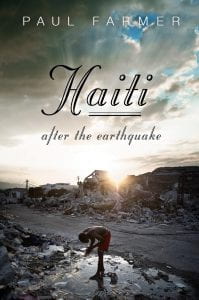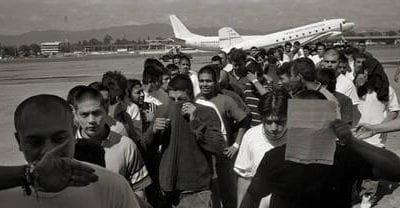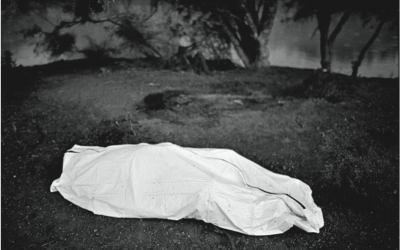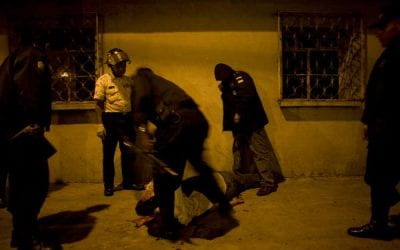A Review of Haiti After The Quake
There is always movement in Haiti. The political, social and ecological terrains are ever-shifting, yet they remain intrinsically connected. Thus the island’s tropical ecology once lured European wealth-seekers to its shores to pursue pernicious economic transactions and install a modern system of colonial slavery. Later, Haiti’s strategic location in the Caribbean brought nineteen years of U.S. occupation, adding misery to the lives of the already long-suffering Haitian people and further destroying the ecological landscape. Most recently, governmental negligence birthed by corrosive and ineffectual dictatorial regimes rendered Haiti vulnerable to, among other things, natural disasters, as evidenced in the aftermath of the 2010 earthquake.
Haiti After the Quake travels a detailed journey through the country’s problems before, during, and after the January 12, 2010, earthquake, exposing Haiti’s tragic past, the myriad roadblocks to development, and its contradictions of governance, ecology, and society. Additionally, it presents formidable accounts of the tragedy, leaving the reader open to a plethora of emotions. Since this book was edited by Dr. Paul Farmer, one of the founders of Partners-in-Health (PIH), the focus is largely on their work and how the organization has succeeded where others have failed or simply were not resolute enough to be sustainably effectual.
Farmer’s book is not for the faint of heart; its blunt truth and descriptive narratives chronicle the real experiences of the compassionate souls who entered the battered Haitian landscape to make a lasting difference. Farmer writes, “I didn’t want to write a dispassionate study of the Haitian earthquake. Instead, I wanted to offer an account of a difficult time; to bear witness” (2011: 2). Bearing witness as such is indeed a passionate and deliberate form of testimonial that portrays subject-to-subject relations in a humanistic way, enabling the reader to absorb events with his or her own subjectivity, and locate within the human geography of knowledge the “personal and place-specific-narratives.”
The catastrophe that the January 12, 2010, earthquake wrought upon Haiti’s capital and its immediate surroundings was simply one of many that had plagued the country for centuries. This book is, above all, a reminder of the vulnerability of deprived human beings who inhabit political and economic spaces where the very notion of social justice is absent. In it Farmer keenly expresses his rationale for creating PIH: “[the] dire need of Haiti’s destitute sick for even basic medical services was the reason we’d founded Partners In Health and Zanmi Lasante a quarter century ago…[for] many poor Haitians, these hospitals had become a last line of defense, and we tried never to refer patients to other facilities unless absolutely necessary” (2011: 8). If, perhaps, the leadership of Haiti had been as committed to the care of its people, Haitians would refrain from taking to the sea on leaky boats or crossing over to the Dominican Republic to work on sugarcane plantations. And perhaps, if the elite of Haiti had cared, destitute Haitians would not have to work for less than $3.00 a day in their own country.
The magnitude of the earthquake can be accurately measured by the damages incurred as a result of the structural weaknesses that are embedded in the Haitian economy. Unattended needs render living spaces utterly vulnerable to natural disaster. Farmer’s reading is correct when he claims that Haitians have for so long been “excluded from any meaningful discussion of their fate.” And exclusionary politics have created substantial failures, “the failure to provide basic services—health care, education, water, sanitation—had reached a parlous state” (43). In Haiti After the Quake, Farmer provides a realistic panorama of Haiti’s man-made disastrous environment and an equally disastrous unresponsive government. Farmer’s humanism, exasperation and transparent style of reporting, along with accounts of the suffering of Haitians prior to and after the earthquake, provide some of the most accurate personal accounts of Haiti that a reader will likely encounter.
Farmer’s position of significant authority allows him unfettered access to the spectrum of power, from those who make decisions about Haiti to those whose suffering he has attended to or at least witnessed. Although his voice has not been correct on all things that are Haiti-related, his overall credibility and healthy passion for Haiti cannot be disputed. His pain is transparent, and his practical sense of purpose as a physician is more than palpable. “My experiences in Mirebalais that first brutal and instructive year inspired a life-long desire to see, in Haiti, a hospital worthy of its people” (184). Farmer acknowledges his good fortune of having friends, colleagues and former students who wanted to contribute to the building of a hospital in Mirebalais that “was three times the size of anything we’d ever attempted to build before” (186). His uncompromising drive and passion are his imprimatur, and such a book could have only been written by such an impassioned individual and his colleagues.
To my surprise, the person in the book who brought me to tears was Nancy Dorsinville. Her piece, “Goudou Goudou,” was effortlessly explicit and utterly poignant. She writes of the time immediately following the earthquake: “In some neighborhoods, people sat in front of their destroyed homes, with their dead neatly wrapped, for the most part in pristine white sheets, by their side. They sat there as if waiting for something big to happen, even though the big event had already occurred” (277). Upon reading this passage, I immediately thought of my cousin, who died in the quake and was also wrapped in a white sheet with an attached tag number reading 33.
Dorsinville also brings us from the chaotic airport to the diplomatic salon where she encounters the newly arrived peacekeepers from the Chinese Ministry of Public Security as they were greeted with flowers by their counterparts who were already stationed in Haiti. She tells us that they “displayed a kind of synchronicity of movement that could have been choreographed” (274). Sadly, the choreography displayed by the Chinese was probably in contrast to the disorder that is regularly found in the Port-au-Prince airport. In another frame of this montage, she acquaints with us with the shared pain of two strangers:
“Walking in log base on afternoon, foggy from sleep deprivation, I noticed an Asian man walking deliberately toward me. I made eye contact as he approached, an unspoken question stuck in my throat. He walked with purpose, yet his face was shrouded with grief. When he reached me, he simply put his head on my shoulder. He did so in a familiar way, as if he had rested his head on my shoulder many times before; …Existentially, we did know each other; our souls were united by sorrow” (2011: 278).
Haiti After the Quake is a must read; its contributors pinpoint overriding concerns and suggest how to build better and give Haitians the dignity they deserve. This book, while largely anecdotal, should also serve as a principled and thoughtful policymaking tool that would place health, education and food security at the pinnacle of an uncompromising agenda. Indeed, Haiti must be rebuilt better and more humane.
Spring 2012, Volume XI, Number 3
Patrick Sylvain is an academic, poet, writer, photographer and social critic. He teaches at Brown University’s Center for Latin American and Caribbean Studies and is a Teaching Fellow at Harvard University’s African and African-American Studies Department. He is working on two collections of poetry, Spirit Chaser and Windows of Exile, as well as two multidisciplinary books on Haiti entitled Framing Structural Violence and Framing Discourse: Metaphors, Poetics and Representation.
Related Articles
Transmigration in Mexico
English + Español
En abril del 2010 una delegación oficial de El Salvador encabezada por Francis Hato Hasbún, el Secretario de Asuntos Estratégicos del gobierno del Presidente Mauricio Funes, visitó México…
Organized Crime as Human Rights Issue
English + Español
It was a horrifying scene— 72 people murdered all at once. One survivor bore witness to the massacre. The dead were migrants, mostly Central Americans; 58 men and 14 women trying to…
First Take: Organized Crime in Latin America
English + Español
Dealing with transnational organized crime is now an official part of U.S. security strategy.
A strategy document, issued by the White House in July 2011, speaks of organized crime groups…





